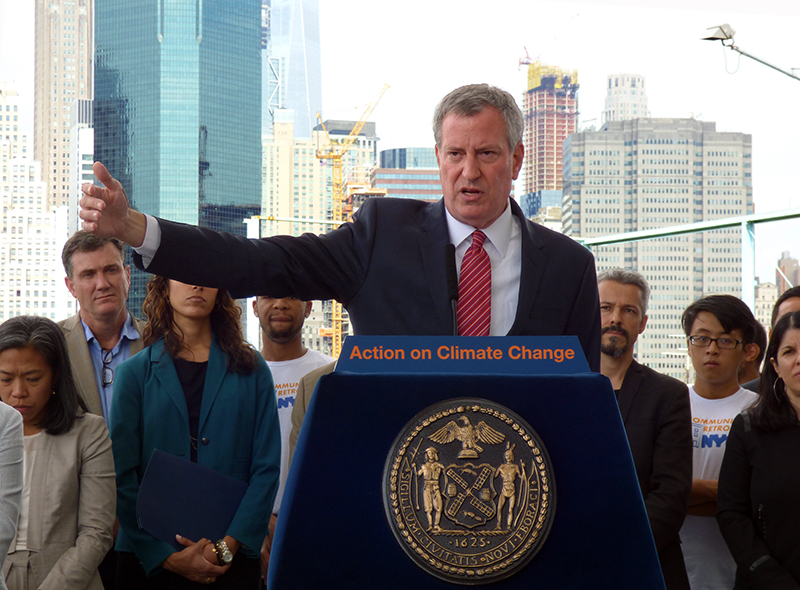De Blasio to force NYC building owners to upgrade buildings to fight climate change
Would require retrofitted boilers, roofs, windows

With New York City’s skyscrapers looming behind him, Mayor Bill de Blasio visited Brooklyn Bridge Park on Thursday to announce new rules that would force thousands of building owners to retrofit their buildings in order to make sharp reductions in greenhouse gas emissions.
Citing disasters ranging from Superstorm Sandy to the recent hurricanes in Texas and Florida, the mayor said New York City must lead the way on climate change initiatives.
“The number one problem is those buildings you see behind me,” de Blasio said as he turned and pointed to the massive structures across the East River. “When we think about pollution we think about vehicles, but these buildings actually are the biggest problem that has not yet been addressed in this city.
